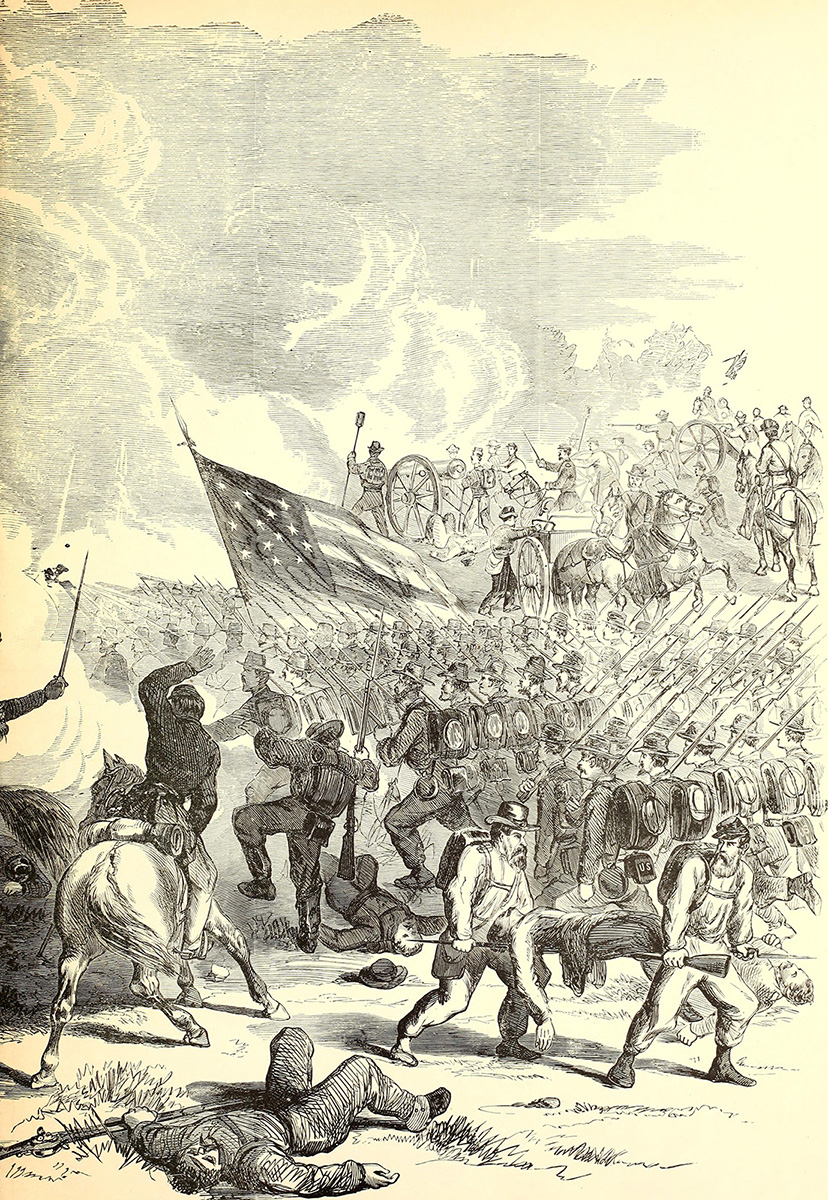Last updated: March 29, 2025
Lesson Plan
Bellringer - Divided Loyalties

Battle at Wilson's Creek, near Springfield, Mo.
Wikimedia
- Grade Level:
- Middle School: Sixth Grade through Eighth Grade
- Subject:
- Social Studies
- Lesson Duration:
- 30 Minutes
- State Standards:
- 6-8.AH.1.CC.B
6-8.AH.1.GS.A
6-8.AH1.CC.E
Essential Question
How were boarder states like Missouri and Kentucky divided during the Civil War?
Objective
Explain connections between historical context and peoples' perspectives at the time in American history. Analyze laws, policies, and processes to determine how governmental systems affect individuals and groups in society in American history prior to c. 1870. Analyze the causes and consequences of a specific problem in American history prior to 1870 as well as the challenges and opportunities faced by those trying to address the problem.
Preparation
Read or display introduction on board before asking disscussion questions.
Procedure
Introduction:
During the Civil War, Missouri and Kentucky were in a unique position. Officially, both states were part of the Union, but the Confederate States of America also claimed them. This is why the Confederate flag had 13 stars instead of 11, including Missouri and Kentucky. Meanwhile, the U.S. flag continued to show all 33 states, even those that had seceded.
Federal troops prevented Missouri and Kentucky from officially joining the Confederacy, but both states were deeply divided. They sent representatives to the Confederate Congress and provided soldiers for both the Union and Confederate armies.
Discussion Questions:
-
Why do you think the Confederacy claimed Missouri and Kentucky even though they were officially in the Union?
-
How do you think having divided loyalties within a state affected the people who lived there?
-
What challenges might the U.S. government have faced in keeping these border states from seceding?
Assessment Materials
Possible Answers:
-
The Confederacy claimed Missouri and Kentucky because they were important for transportation, resources, and strategic defense. Both states had many people who supported the South, even though they stayed in the Union.
-
Divided loyalties caused tension and conflict among families, neighbors, and communities. Some people joined the Union, while others supported the Confederacy, leading to violence and distrust.
-
The U.S. government had to prevent these states from seceding by using military force, political pressure, and promises to protect slavery where it already existed. Lincoln had to be careful not to push them toward the Confederacy.
Enrichment Activities
Bell-Ringer Extension: Student Voice-Choice - I use this when when I feel the students are getting the hang of analysis and being limited by the surface level analysis questions presented.
Bell Ringer: Investigating History Through Inquiry
Instructions:
Look at the (insert any primary/secondary source) and develop three compelling questions that would help you analyze the source. Think about what information you need, different perspectives that might be represented, and how you could find reliable sources to answer your questions.
Step 1: Examine the primary source (provide any image or excerpt from a letter, speech, newspaper article, political cartoon, etc.)
Step 2: Develop three compelling questions about the source.
Consider:
-
What historical context do you need to understand it?
-
What perspectives or biases might be present?
-
What other sources could help you analyze it?
Contact Information
Email us about this lesson plan
